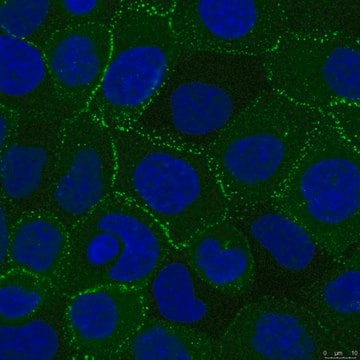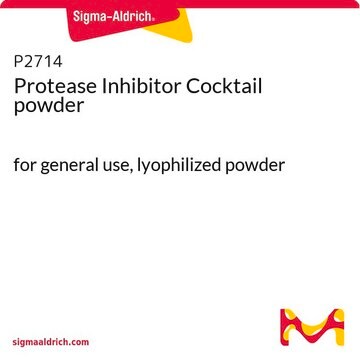R8761
Nco I from Nocardia corallina
Restriction Enzyme
Sign Into View Organizational & Contract Pricing
All Photos(1)
About This Item
CAS Number:
MDL number:
UNSPSC Code:
12352204
Recommended Products
grade
Molecular Biology
for molecular biology
form
buffered aqueous glycerol solution
concentration
10,000 units/mL
shipped in
wet ice
storage temp.
−20°C
Looking for similar products? Visit Product Comparison Guide
Specificity
Recognition sequence: 5′-C/CATGG-3′
Cutting results: a 2-10-fold Nco I overdigestion of 1 μg λ DNA substrate results in 100% cutting
Heat inactivation: Inactivated at 65 °C for 15 minutes.
Cutting results: a 2-10-fold Nco I overdigestion of 1 μg λ DNA substrate results in 100% cutting
Heat inactivation: Inactivated at 65 °C for 15 minutes.
Application
NcoI is a DNA restriction endonuclease that is used in molecular biology applications to cleave the DNA recognition site 5′-C/CATGG-3′, resulting in DNA fragments with 5′-cohesive termini.
Other Notes
Supplied with 10x Restriction Enzyme Buffer SH (B3657).
Physical form
Solution in 20 mM Tris-HCl, pH 8.0 , 0.1 mM EDTA, 100 mM NaCl, 10 mM 2-mercaptoethanol, 50% glycerol (v/v), 0.2%Triton X-100 (v/v) at 4 °C
related product
Storage Class Code
12 - Non Combustible Liquids
WGK
WGK 2
Flash Point(F)
Not applicable
Flash Point(C)
Not applicable
Choose from one of the most recent versions:
Already Own This Product?
Find documentation for the products that you have recently purchased in the Document Library.
E M Van Cott et al.
Gene, 74(1), 55-59 (1988-12-25)
Methyltransferase genes from the FnuDI, NaeI, NcoI, and XbaI restriction-modification systems have been isolated in Escherichia coli by 'shot-gun' cloning bacterial DNA fragments into plasmid vectors and selecting for protectively modified molecules that resist digestion by the corresponding restriction endonuclease.
Retargeting of human T cells to tumor-associated MUC1: the evolution of a chimeric antigen receptor.
Scott Wilkie et al.
Journal of immunology (Baltimore, Md. : 1950), 180(7), 4901-4909 (2008-03-21)
MUC1 is a highly attractive immunotherapeutic target owing to increased expression, altered glycosylation, and loss of polarity in >80% of human cancers. To exploit this, we have constructed a panel of chimeric Ag receptors (CAR) that bind selectively to tumor-associated
Jonathan V Reddy et al.
Molecular biology of the cell, 17(10), 4353-4363 (2006-08-04)
Mannose 6-phosphate receptors (MPRs) deliver newly synthesized lysosomal enzymes to endosomes and then recycle to the Golgi. MPR recycling requires Rab9 GTPase; Rab9 recruits the cytosolic adaptor TIP47 and enhances its ability to bind to MPR cytoplasmic domains during transport
C Kessler et al.
Gene, 92(1-2), 1-248 (1990-08-16)
The properties and sources of all known class-I, class-II and class-III restriction endonucleases (ENases) and DNA modification methyltransferases (MTases) are listed and newly subclassified according to their sequence specificity. In addition, the enzymes are distinguished in a novel manner according
Saqib H Ansari et al.
Journal of pediatric hematology/oncology, 35(4), e153-e156 (2013-02-08)
β-thalassemia is characterized by impaired β-chain synthesis leading to ineffective erythropoiesis, severe anemia, and a need for blood transfusion. Presence of Xmn I polymorphism (-158 C-T nucleotide change) in γ-globin gene is associated with a higher fetal hemoglobin and a
Our team of scientists has experience in all areas of research including Life Science, Material Science, Chemical Synthesis, Chromatography, Analytical and many others.
Contact Technical Service




